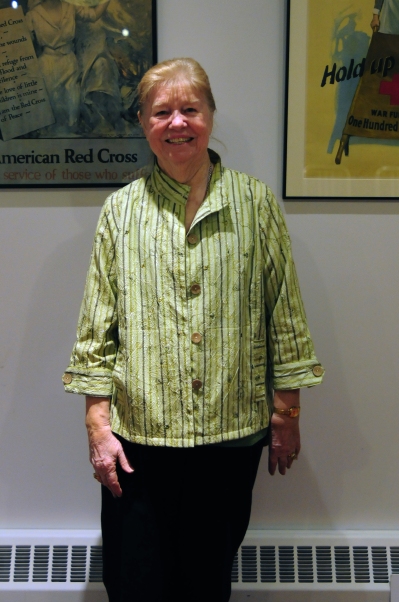Written by Charlie Wick
 NEW YORK, N.Y., December 7, 2012 – In her 56 years as a volunteer for the Red Cross, Sue Zebick has worn many hats: seamstress, nursing aide, supply manager and field secretary.
NEW YORK, N.Y., December 7, 2012 – In her 56 years as a volunteer for the Red Cross, Sue Zebick has worn many hats: seamstress, nursing aide, supply manager and field secretary.
From Red Cross disaster to disaster, Zebick has traveled to Puerto Rico, Saipan, The Mariana Islands, The Marshal Islands, Saint Thomas and all over the United States working for the Red Cross. Weeks after Hurricane Sandy made landfall in New York on Oct. 29, the Red Cross called again, and Zebick couldn’t say “no”.
In the past two weeks, Zebick has been knocking door-to-door in some of the hardest-hit areas of Hurricane Sandy as part of the Red Cross Condolence Team.
“Back in the trenches again,” Zebick said. “I guess you could say I am hooked on disaster relief.”
More than 15,300 Red Cross workers – 90 percent of whom are volunteers who have come from across the country – have helped New York and the surrounding areas recover from the worst hurricane in its recorded history. Along with Red Cross chaplains and mental health workers, condolence volunteers comfort people who have lost loved ones and help them arrange services and other recovery needs beyond the Red Cross’ purview.
Beginning her Red Cross service as a young mother in 1956, Zebick sewed baby layettes for military wives who had just given birth. “I thought that was something I could do to help and still be at home for my children,” she said.
She continued her work for the Red Cross on two military bases on the West Coast. First, in her native San Diego, Zebick visited and distributed comfort items to the servicemen in the naval base hospital. On Whidbey Island, in Puget Sound Washington, she was a secretary for the Red Cross Field Director for Service to the Military.
She couldn’t say “no” again when the Red Cross asked her to be the chairman of volunteers on the same base. At that time in 1971, she wanted to work only with the military and had taken just the basic Disaster Services Orientation class for the Red Cross. But a close friend soon called to ask if she could distribute supplies for a local disaster.
“It was life-changing to be right there on the front lines,” Zebick says. “I got back home and when my husband asked me how my day had gone, I talked all night about it.” Zebick was bitten.
In 1973, the National Red Cross asked her to be a Red Cross Reservist for Long Term Recovery and again Zebick couldn’t say “no”. While working many disasters in this special function from 1973 to 2006, she was away from home for months at a time. When wildfires struck in California, the Red Cross deployed for more than two years, with only weekend visits to her family.
“I missed them, but I was there to do a job. They got used to it,” Zebick said.
Since that time, Zebick has been active in her home chapter of San Diego and as a consultant for Long Term Recovery for 36 chapters. In that capacity, she set up centers with packets of information to help counties to assist their long term recovery clients easily and effectively.
“New York has been a different kind of challenge,” Zebick said. “Floods are much different from fires, but helping people is all the same.”
